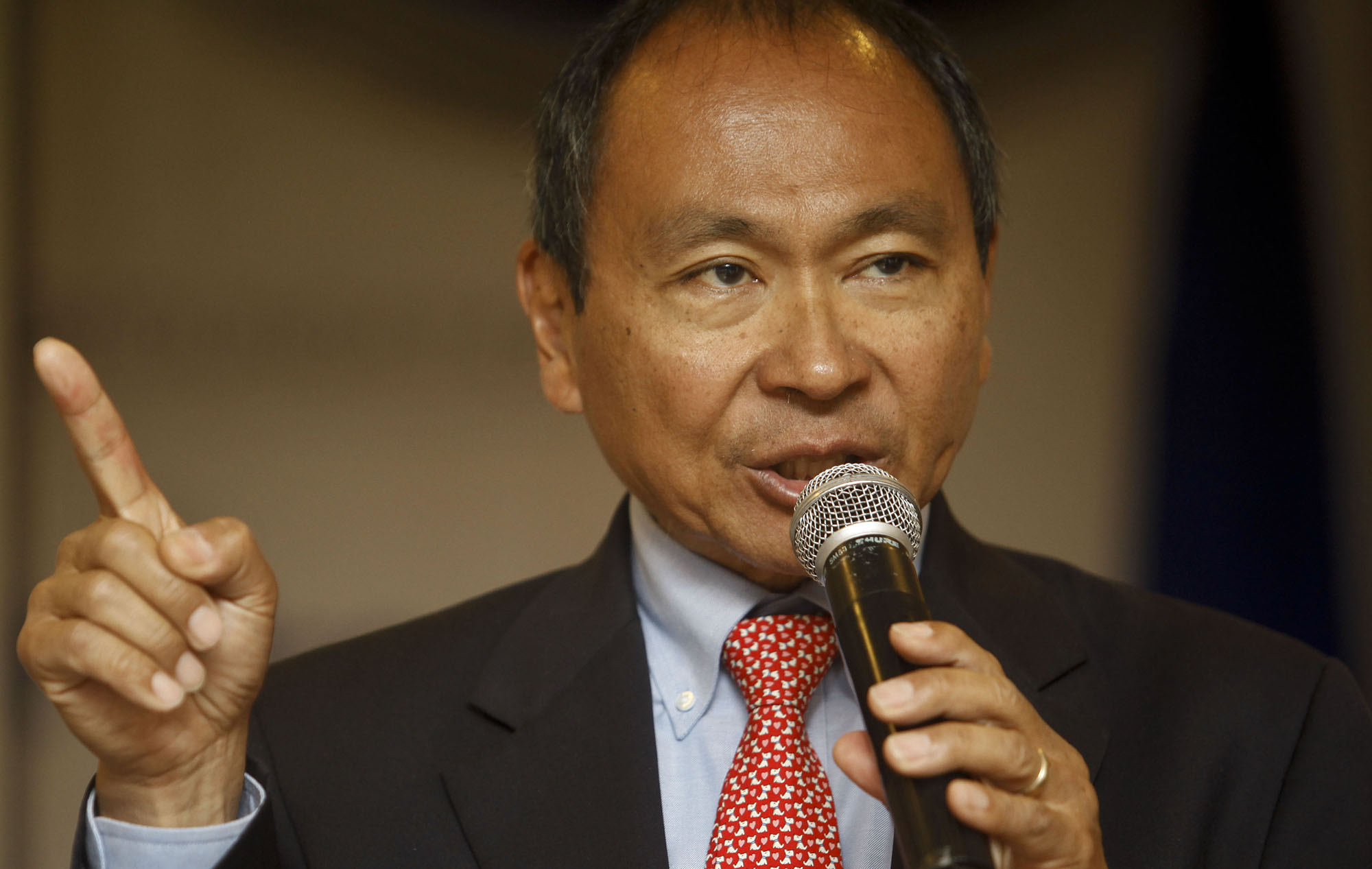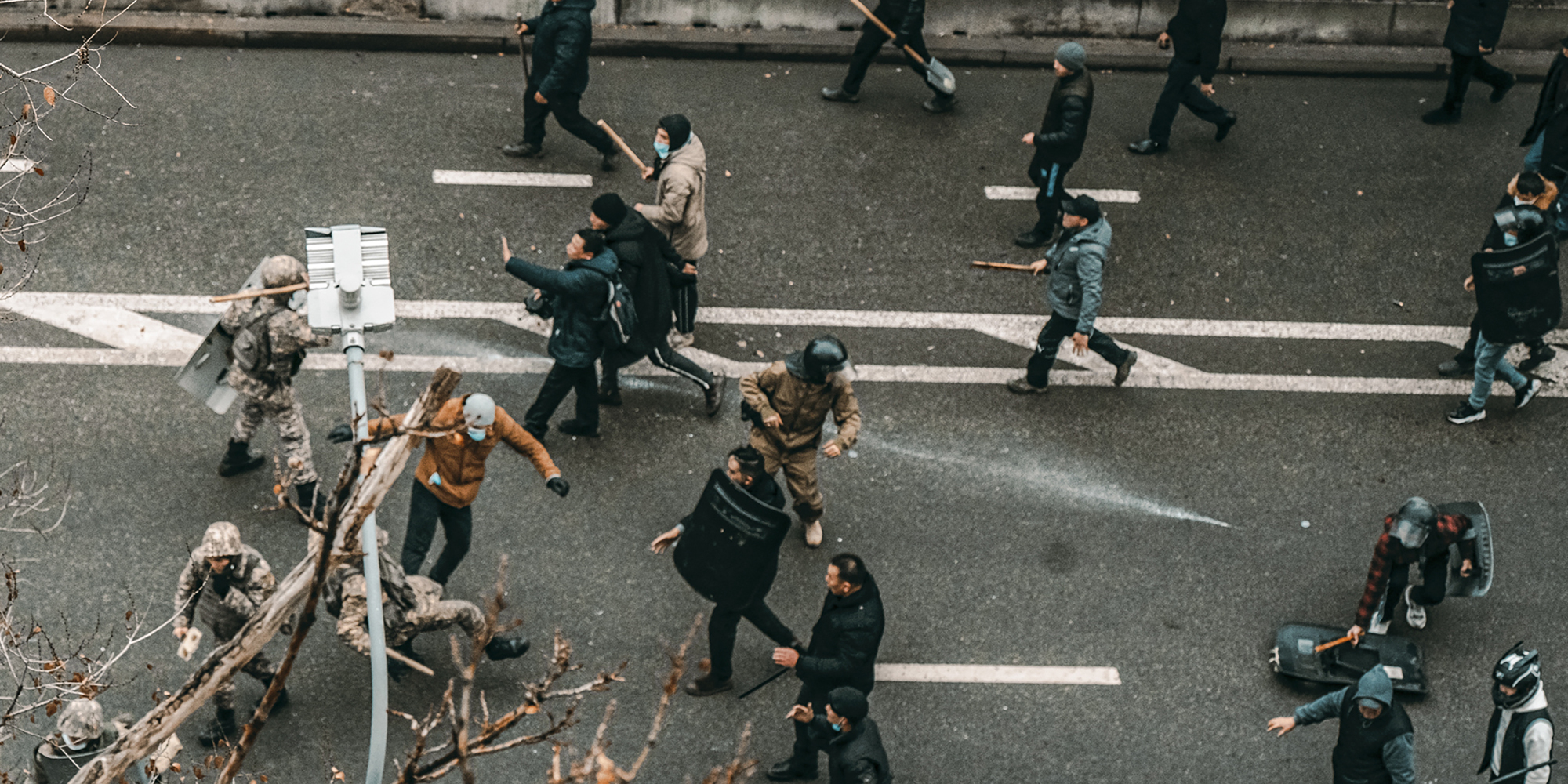POPULIST UPHEAVAL
Francis Fukuyama and The End of (Democratic) History

Too often the pictures of the popular imagination and in the movies have political and social movement guided and directed by mysterious, hidden masterminds. The truth is more complex — and more problematic.
The nature of our present circumstances gives good reasons to wonder if that promised expansion of a post-Cold War, liberal democratic era is now heading in full retreat from that promise. Political scientist and commentator Francis Fukuyama had made a famous prediction (now, more often seen as a self-deluding, wishful prophecy) of that inevitable evolution, when, back at the end of the Soviet-American competition, he had written what is still his most widely cited volume, The End of History and the Last Man.
Fukuyama’s book, and an enthusiastic public embrace in the West of its main theme, especially by President George HW Bush, his administration, and a host of academic and policy analyst spear bearers, was well timed to coincide with the collapse of the Soviet Union. It seemed to gain further traction when the USSR broke up into Russia and 14 other nations, including Ukraine, Belarus and Kazakhstan. Some of the successor states even began to take their initial, tentative steps in democratic experiments.
The Bush administration and its supporters — globally — had taken heart from Fukuyama’s prophecies and they constructed much of their international effort on the assumption that with the nearly inevitable growth in the democratic experiment, the virtuous democratic circle would come to include an ever-growing global population, eventually including the new Russia. There was even hope for a euphonious role for China in this happy place, a bit further down the road.
Watching this new, nascent international democratic order come into being meant reaching a real utopia. The end of those historical cycles and frequent conflicts meant civilisation was on the verge of breaking free from the rubble of all those authoritarianisms on the left and the right. They were being tossed into the rubbish tip of history. Glory, glory hallelujah and a victory lap were in order, in celebration of what was coming next.
But as we sadly now know better, things have not quite worked out the way Fukuyama originally predicted. In fact, in a remarkable column in The New York Times at the beginning of 2022, Fukuyama has now dramatically amended his earlier view — sharply away from the celebratory tone of his earlier book.

Yoshihiro Francis Fukuyama, US political scientist, political economist and author. (Photo: EPA / Lynn Bo Bo)
His mea culpa is worth quoting from at some length. In it, Fukuyama wrote, “Jan. 6 [the US Capitol insurrection] needs to be seen against the backdrop of the broader global crisis of liberal democracy. According to Freedom House’s 2021 Freedom in the World report, democracy has been in decline for 15 straight years, with some of the largest setbacks coming in the world’s two largest democracies, the United States and India. Since that report was issued, coups took place in Myanmar, Tunisia and Sudan, countries that had previously taken promising steps toward democracy.
“The world had experienced a huge expansion in the number of democracies, from around 35 in the early 1970s to well over 110 by the time of the 2008 financial crisis. The United States was critical to what was labeled the ‘Third Wave’ of democratization. America provided security to democratic allies in Europe and East Asia, and presided over an increasingly integrated global economy that quadrupled its output in that same period.
“But global democracy was underpinned by the success and durability of democracy in the United States itself — what the political scientist Joseph Nye labels its ‘soft power’. People around the world looked up to America’s example as one they sought to emulate, from the students in Tiananmen Square in 1989 to the protesters leading the ‘colour revolutions’ in Europe and the Middle East in subsequent decades.
“The decline of democracy worldwide is driven by complex forces. Globalization and economic change have left many behind, and a huge cultural divide has emerged between highly educated professionals living in cities and residents of smaller towns with more traditional values. The rise of the internet has weakened elite control over information; we have always disagreed over values, but we now live in separate factual universes. And the desire to belong and have one’s dignity affirmed are often more powerful forces than economic self-interest.
“The world thus looks very different from the way it did roughly 30 years ago, when the former Soviet Union collapsed. There were two key factors I underestimated back then — first, the difficulty of creating not just democracy, but also a modern, impartial, uncorrupt state; and second, the possibility of political decay in advanced democracies.” [Italics added]
To that, we should also add one additional factor: The ability of a state and government to deliver on its end of the explicit or implicit social contract with citizens in terms of providing material benefits in exchange for an embrace of the legitimacy of the state. Or, in tough times, and at a minimum, there should be a tangible sense of fairness about the shared sacrifices citizens are called upon to endure.
Those factors also point to a growing sense in many countries and societies — among significant parts of their respective populations — that their states and their governments are not modern, impartial, uncorrupted ones. The whiff of governmental decay is increasingly present; and those explicit and implicit social contracts are being ignored or trampled upon by the state. In tough times sacrifices are real, but they are not being divided up and apportioned fairly — and that it is getting worse.
In such circumstances, what I have previously referred to as stochastic populism and stochastic terrorism and are finding increasingly fertile ground.
In the way used here, “stochastic” is drawn from the disciplines of geology and volcanology, and it describes how superheated, liquified magma under great pressure below the Earth’s crust eventually breaks through that crust to the surface at a spot where the crust is weak, or where there is a flaw or fault. The result is vast destruction and devastation. But, crucially, those breakthroughs are not so easily predictable as to precisely where, when, how often or how violent they will be, when they take place.
By analogy with human societies, this can describe the nature of many nearly leaderless (at least initially) social movements, especially as no one can effectively predict how, where and when a new movement will catch hold. Individual political figures or their ideas can inspire such movements, but they will have trouble willing it into being and guiding it by themselves.
Instead, leaders try to respond to such eruptions and attempt to make them their own. Would-be leaders might be reminded of the old story of the French general sitting at a sidewalk café in Paris, who looks up from his absinthe, sees a vast, angry mob running down the nearby boulevard, and turns to friends sitting with him to say, “Excuse me. I must leave. There are my followers; I must hurry to lead them.”
Now add into this volatile mix the revolution in communication available to disaffected individuals, waiting to break through the “crust”, whether they are using smartphones, email, or the whole panoply of social media outlets. With these in hand, media can become the connective tissue for a nearly permanent, instant flash mob for a cause, an issue, or a deep well of grievance and dissatisfaction. Political and social campaigns no longer require all that cumbersome (and often expensive) printing and distribution of flyers or leaflets, with the risk the effort will be thwarted by authorities.
The first true electronic effort, an echo of what Thomas Friedman had called how the “electronic herd” makes massive investment decisions in sheer nanoseconds, seems to have been a campaign in 2001 to demand the resignation of Philippine President Joseph Estrada.
Ad hoc organisers sent out text messages calling on supporters to wear black clothing, assemble at a central point in the capital, and then pass the text message to 10 or more of their friends to join a rally to demand his resignation — with the distribution following a logarithmic progression. They did, and Estrada abandoned his hold on the presidency in the face of the huge crowds and an obvious total loss of popular support.
In our present time, short of shutting down a country’s entire telecommunication infrastructure, it has become increasingly difficult to prevent people from figuring out workarounds in response to official electronic meddling, blockages or stoppages. People communicate via VPNs and other messaging channels to pass along information, video clips and news. They become electronic herds that can become actual, physical crowds; and then to realise how such crowds may evolve into actual mass movements.

Supporters of former US president Donald Trump stand by the door to the Senate chambers after they breached the US Capitol security in Washington, DC, US, on 6 January 2021). (Photo: EPA-EFE / JIM Lo Scalzo)
Even among all those squabbling groups which claim to be the embodiment of the ideas of Donald Trump, even as they do communicate among themselves, and even as some of their funding is traceable back to a relatively small number of highly conservative funders, much of their money and support ultimately comes from thousands of individual donors who are definitively not rich. This money arrives courtesy of unrelenting, internet-based fundraising campaigns. And the movement’s “shock troops” such as the Proud Boys, may be amorphously organised, as they, too, use current communications channels.
While rhetorical content may come from messages by the former president and amplified by several cable news TV channels, it should be understood that actual action is not managed by well-tailored, immaculately tonsured folks gathered in a mahogany-panelled boardroom, along with cut glass decanters and tumblers arrayed on a polished rosewood conference table — despite what cinematic thrillers would like us to believe. Instead, the loose, diffuse nature of these networks now makes them so much harder to stop, to defend against, or to deflect, let alone to defeat. And they keep springing up over economic, social and political causes because there are always real grievances that stoke the fires.
But such movements are not just for the downtrodden, those “wretched of the earth”. Any halfway competent authoritarian wannabe can figure out how to exploit such dissatisfaction, and to nurture and encourage a mass movement with those who have their deeply felt grievances, as with the Trump movement, or with Hungarian President Viktor Orban, or, more subtly, with the political machinations of Russia’s Vladimir Putin.
Specifically about the Republican Party in America, the many networks and loosely organised bodies supporting a changed party, and most especially the impact of former president Trump’s supporters in reshaping that party, The Economist commented:
“Anyone hoping the party would ‘snap back’ to its pre-Trump state will be disappointed. They might also be misremembering what that state was. The party has been shifting towards aggrieved extremism at least since Barack Obama’s first election. In 2012 the political scientists Thomas Mann and Norm Ornstein wrote: ‘The Republican Party has become an insurgent outlier — ideologically extreme; contemptuous of the inherited social and economic regime; scornful of compromise; unpersuaded by conventional understanding of facts, evidence and science; and dismissive of the legitimacy of its political opposition.’ Mr Trump was not the instigator, but rather a beneficiary and powerful accelerant of that long-standing drift. [italics added]
“The Democrats have also grown more hardline, and for some of the same reasons. Discontent with globalisation and inequality has boosted populism of both stripes. America’s primary system and the rise of non-competitive districts have reduced the rewards of moderation. Yet the Democrats’ shift is so much more modest as to be almost incomparable — a situation Messrs Mann and Ornstein termed ‘asymmetric polarisation’. The centre-left still runs their party, the left supports most of the centre-left’s objectives (even if begrudgingly) and Democrats are not threatening democratic norms.”
As this article is being written, yet another example of the interplay between the dissatisfactions of a population breaking through the “crust” has been taking place in Kazakhstan, a vast country in Central Asia that was part of Russia and then the Soviet Union from the latter part of the 19th century until the dissolution of the USSR a century later.

Riot police officers block a street during a protest rally over a hike in energy prices in Almaty, Kazakhstan, 5 January 2022. Protesters stormed the mayor’s office in Almaty, as Kazakh President Kassym-Jomart Tokayev declared a state of emergency in the capital until 19 January 2022. (Photo: EPA-EFE / STR)
As with many other eruptions of violent dissatisfaction, the protests in Kazakhstan seemed to have emerged in response to sudden, large price rises in a key essential commodity — fuel. (Shades of the increasingly violent protests several years ago in France by the Mouvement des gilets jaunes, the “yellow vests”, over fuel price rises that affected their transportation and haulage businesses. And there are obvious echoes, too, with the beginnings of the Arab Spring a decade ago.) And now, in Kazakhstan, a murky, still-confusing interplay between an eruption of violent protest and political infighting — between supporters of the current president, Kassym-Jomart Tokayev, and those beholden to his 81-year-old predecessor, Nursultan Nazarbayev — appears to have been important. (South Africans might pause here to consider the possibilities of parallels with their own state of affairs.)
The New York Times, in reporting on Kazakhstan’s turmoil, on 8 January, noted, “But it remains a mystery how peaceful protests over a rise in fuel prices last weekend in Zhanaozen, a grimy, Soviet-era settlement near the Caspian Sea, suddenly spread more than a thousand miles across the full length of Central Asia’s largest country, turning the biggest and most prosperous Kazakh city into a war zone littered with dead bodies, burned buildings and incinerated cars. [To answer that question we would encourage considering the role of electronic communications in spreading the message and encouraging others to break through the “crust”.]
“The violence this week in Almaty, Kazakhstan’s former capital and still its business and cultural hub, shocked just about everyone — not only its leader, who, fortified by Russian troops, on Friday ordered security forces to ‘fire without warning’ to restore order, but also government critics who have long bridled at repression and rampant corruption in the oil-rich nation.

Protesters clash with policemen during rally over a rise in energy prices in Almaty, Kazakhstan, 5 January 2022. Protesters stormed the mayor’s office in Almaty, while Kazakh President Kassym-Jomart Tokayev declared a state of emergency in the capital. (Photo: EPA-EFE / Alexander Kuznetsov)
“The crisis coincided with a power struggle within the government, fueling talk that the people fighting in the streets were proxies for feuding factions of the political elite. There is also feverish speculation about Kremlin meddling and a host of other murky possible causes. About the only thing that is clear is that the country’s convulsions involve more than a straightforward clash between protesters expressing discontent and the heavy-handed security apparatus of an authoritarian regime.”
The paper’s reporting went on to say that President Tokayev, looking for that mythic control room of masterminds, “in an address to the nation on Friday, alluded to that, claiming that the violence was the work of some 20,000 ‘bandits’ who he said were organized from ‘a single command post’. Calls for negotiations with such people, he added, were ‘nonsense’ because ‘they need to be destroyed and this will be done’.”
In response to the demonstrations, rioting, and violence, Russian President Putin had quickly dispatched his army’s special forces units to help contain the violence. But also, perhaps, as it was being speculated, to preclude the possibility the unrest in Kazakhstan would encourage such actions elsewhere, against Russian interests, or even within eastern Russia — Siberia — itself. (Ukrainians are almost certainly paying close attention to all this, especially that deployment of Russian troops just a few days after rioting first broke out.) One thing this surely illustrates is that the breaking through the “crust” is no respecter of lines on maps, and that it is very hard to predict where such things will happen or not happen, given the easy transmission of word about grievances — and there are always grievances.

Riot police officers patrol in a street during rally over a hike in energy prices in Almaty, Kazakhstan, 05 January 2022. Protesters stormed the mayor’s office in Almaty, as Kazakh President Kassym-Jomart Tokayev declared a state of emergency in the capital until 19 January 2022. (Photo: EPA-EFE/STR)
Politicians will, obviously, seek out and embrace such efforts to bolster their own political power and to attempt to lead protests for their own benefit. And social and political movements will, similarly, continue to break through the “crust”, even as participants will communicate with one another via the latest communications channels. The future, likely, will not be anything like the cheerful one Francis Fukuyama had once imagined it would become. DM
[hearken id=”daily-maverick/8976″]


















 Become an Insider
Become an Insider
Now I know what stochastic means.
Nursultan Nazarbayev has just been charged with treason which should be but won’t be another parallel with Zuma.
The political scientists’ description – already back in 2012 – of what the Republican Party had become is instructive, and exposes the ideal of bipartisanship as threadbare wishful thinking on any matter that would not advance the Republicans’ brazen grasp for power at all costs. Thing is – nobody seems to have mentioned this to senator Joe Manchin, who seems to live in some lala-land of not wanting to pass anything a sizeable portion of his ideological soulmates would not agree to (ref his fondness for the filibuster). When are the American people, especially the good folk from West Virginia, going to wake up and start exposing the Democrat-in-name-only for the turncoat he is? He is single-handedly (with Kyrsten Sinema playing a cameo role) responsible for derailing the Biden agenda on a number of sweeping reform initiatives that would make the world a safer place.